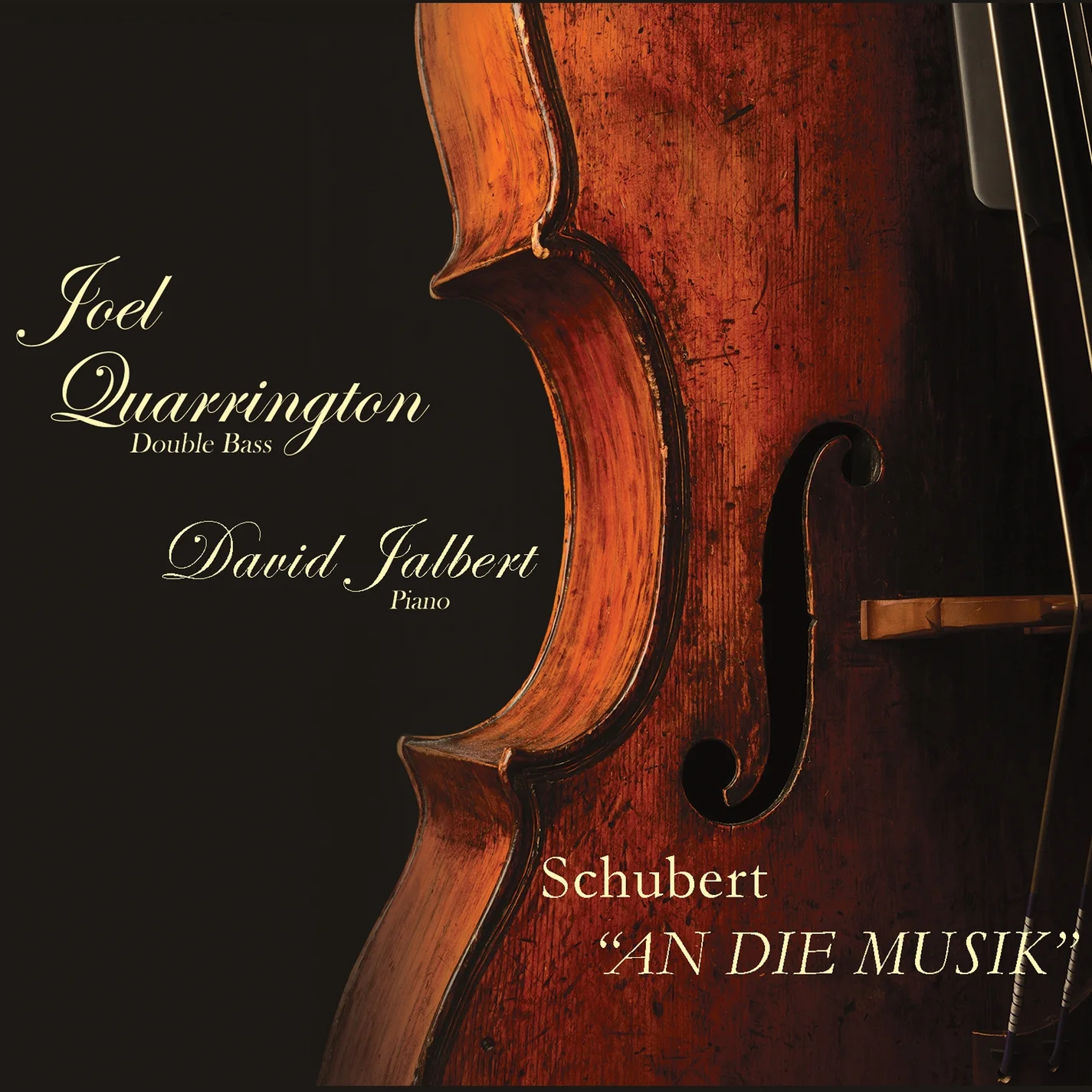An die Musik
Give music lovers a quick glance at a CD cover with the words "Schubert" and "double bass" and expect them to think of the "Trout" Quintet. But no, there is nothing fishy on this disk, nor any heretofore undiscovered Schubert chamber music for double bass. Oh, some purists might argue that everything here is "fishy"--for Schubert conceived all of this music for other instruments. We're wallowing in transcriptions, and for a chunk of the 20th century, transcription was a practice of ill repute, an assault on the sanctity of the Great Composer's "Work." But before and indeed during that spell, transcription remained absolutely mainstream music-making, and for most amateurs and students, was the dominant experience of the canonic repertory. Remember, the "Trout" Quintet contains a transcription by Schubert himself, for the Trout was of course first a song, which he apparently had no problem re-imagining in an instrumental medium.
Thinking about transcription quickly leads to deep aesthetic questions. What is the essence of a “work” or a “composition”? What are the minimal requirements for a performance that claims to be “of” a given “work”? Surely one of the most mutable aspects is medium. In the case of Schubert’s “Arpeggione” sonata, to transcribe for some other instrument is an act of cultural preservation, since the fad of the 1820s for the newly invented arpeggione (a six-stringed instrument, shaped, fretted, and tuned like a guitar, but held and bowed like a cello) was very short-lived. Schubert’s piece is, I believe, the only surviving composition for it, and was not published until 1871, long after the few instruments built had effectively disappeared. Those who played arpeggione during its brief heyday apparently relied upon, well, transcriptions!
With the so-called “Prayer,” we see another main driver of transcription. In the days before recordings, it was to give one or two performers domestic access to “works” notated for large performing forces–opera companies, symphony orchestras, even octets. In this case, the programmatic title was the sentimental conceit of Friedrich Hermann, who made a transcription for violin or cello (the melodic instrument was clarinet in Schubert’s Octet) and piano sometime before his death in 1907.
In addition to these (and other) utilitarian or commercial reasons, we might finally value transcription simply for the pleasure it affords players and listeners, believing that the “music” of a “work” lies somehow beyond yet also within any particular written or acoustic instance of it. We might think of composers more as enablers than dictators, of performers more as discussants than executants, of listeners more as alert imaginers than passive receivers, of editions and performances more as examples of the possible than definitions of the eternally correct or best. When the poet Schober pays tribute "An die Musik," it is to Music, he says, as a sacred thing, a transport to a "better world," a way to glimpse "better times." He likely is not thinking just of an arpeggione, or a double bass, or any one piece or performance. Perhaps especially when a disc like this presents transcriptions for forces a bit unusual, we affirm a universal experience of musical Art and Artistry, in which Schubert and Joel and David–and you! – are all active participants.
Produced and edited by Roberto Occhipinti
Recorded, mixed and mastered by Jeff Wolpert for Desert Fish Productions
Graphic design and layout by Gabriel Altrows at Indie Pool
Photographs by Fred Cattroll
Liner notes by Prof. Jeffrey Stokes
Executive Producer Joel Quarrington
Recorded December 5 and 6 2016 at the Isabel Bader Theatre, Kingston Ontario
I would like to thank Roberto Occhipinti, without whose skill, expertise and faithful friendship this recording could not have been made; and Carole Sirois, without whose support, encouragement and devotion it would not have been possible.
I dedicate this recording to my parents.
1. An die Musik
(To Music) D.547............................2'56"
2. Du bist die Ruh
(You are Peace) D.776................3"51"
Sonata in A minor, “Arpeggione” D. 821
3. Allegro Moderato....…11’45”
4. Adagio........... 4’
5. Allegretto.........9’
6. “Prayer”
from the Adagio of the Octet D. 80...…3’04
7. Ständchen
(Serenade) D.957..........3’22”
8. Litanei auf das Fest Allerseelen
(Litany for All Souls Day) D.343…....2’52”
9. Auf dem Wasser zu Singen
(To Sing on the Water) D.774.......2'24"
10. Nacht und Träume
(Night and Dreams) D.827).......3’20”
Sonatina in D Major D.384 op. 137 no. 1
11. Allegro molto..…….4’58”
12. Andante…………......4’30”
13. Allegro vivace…......4’16”
Total time 61 minutes
For purchase in digital or physical formats in the store
Available also on iTunes Store
and here:
L’Atelier Grigorian
70 Yorkville Ave, Toronto, ON
-
Franz Schubert
-
Franz Schubert
-
Franz Schubert
-
Franz Schubert
-
Franz Schubert
-
Franz Schubert
-
Franz Schubert
-
Franz Schubert
-
Franz Schubert
-
Franz Schubert
-
Franz Schubert
-
Franz Schubert
-
Franz Schubert
